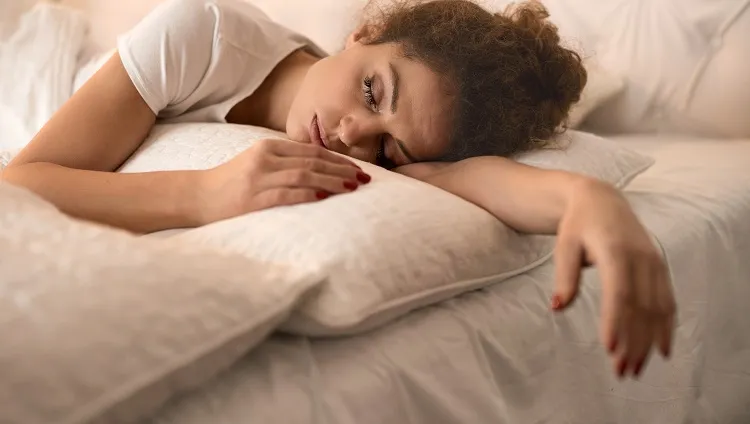Instructions to Fix Common Sleep Problems
A sleep disorder that is temporary lasts over a few days, and is usually not cause for worry. For instance, if you experience flying slack, or perhaps occasional timing changes.

Every year, over 40 million people in North America experience the ill consequences of dozing. A further 20 million have frequent dozing problems.
Whatever the reason for rest in the midst of adversity, research has demonstrated that it affects our intellectual well-being and in real. When we are resting the body releases chemicals that affect the state of our mind as well as energy, memory and fixation. The impact of this treatment on bothering Cenforce 100 mg and Cenforce 150 mg might require a portion of a month prior to they are clear. Tests have shown that those who are unable to rest may perform the same way the driving test system or dexterity test as drunk people. In addition, it has demonstrated that the lack of rest could cause hypertension, which can cause problems with diabetes.
Everyday Sleep Problems and Causes
Issue 1: Cannot Fall Asleep – Cannot Stay Asleep
Many people suffer from the tiniest of sleep problems at some point or another. Sleep deprivation is characterized by difficulty falling asleep, having trouble getting to sleep, or being up too early. The condition is most prevalent for females, those who have a history of depression, and those who are experienced over 60. The smallest sleep disorder may be caused through:
- A commotion is heard
- A painful event, such as the demise of a project or death in the family or even harrowing events in the world
- Certain medications can keep you awake, particularly those used to treat colds and symptoms of coronary illness, sensitivities as well as hypertension and agony.
- Negative habits that can affect our lives include drinking alcohol and eating too much at night.
A sleep disorder that is temporary lasts over a few days, and is usually not cause for worry. For instance, if you experience flying slack, or perhaps occasional timing changes, your inner body clock will settle it’s self in the near future. Sleeping disorders are persistent when it continues to recur all evenings for a half months or longer. This longer-term is worthy of careful consideration.
Sometimes, sleep deprivation can be caused due to a primary illness that requires treatment, for instance,
- Thyroid problems
- Nervousness
- Wretchedness
- Joint inflammation
- Asthma
- An inclination to fidget
Issue 2: Sleepy During the Day
Finding yourself exhausted every now and then in the course of the day is not unusual. It’s rare for tiredness to hamper the routine exercises. In particular, you shouldn’t take a nap while reading the newspaper, attending meetings, or waiting at the red light. A sluggish back, difficulty of focusing, tired eyes and feeling irritable are all warning indicators.
If you’re tired all the the day, you might require a little more time for relaxation. The majority of grown-ups require about eight hours of sleep per day to be reenergized however this varies from person to. You should take a break for the time it takes you to feel rejuvenated, energized and fully awake the next day.You will not be sluggish throughout the day after having been able to rest well at night. The benefits of rest are great but they’re also completely American.
If you’ve been sleeping an acceptable amount of time, then you have a slow-going outlook of your routine daily activities. But If altering your sleeping habits hasn’t worked to improve your sleep, it’s time to talk with your medical professional. A pronounced daytime sluggishness may be due to a variety of sleep issues. For instance, those who suffer from narcolepsy are tired even after a whole night’s sleep.
Issue 3: Snoring
It is a loud breath at rest, which occurs when loose structures in the throat shake and create a wheezing sound. The majority of wheezing is harmless. But, it can cause irritation and disrupts the other individuals. The wheezing may be stopped by a lifestyle modifications, for instance.
- Working out
- Eliminating the use of smoking and alcohol.
- They change their resting positions. This, generally will keep snorers off from them and to their sides to allow to keep the air route to make it more accessible during time of rest.
There are nasal strips available over the counter placed over the nose to increase the space inside the nose and ease breathing. Peruse names carefully as these strips are designed to help treat wheezing. The words will bring up specific symptoms which require the expertise of a physician.
When a person with rest apnea is trying to breathe the body pulls which falls on the windpipe and also impedes the passage of air. Blood oxygen levels fall and the mind agitates the patient, who is triggered to wheezes or grunts and then continues to wheeze. This pattern is repeated frequently often in the evening. The cycle brings on successive revelations which prevent individuals from reaching their most profound phases of rest and leaves them exhausted throughout the day.
Step-by step instructions to get the best night’s sleep
The first and most important thing is to understand the time of rest is useful. It is common to go through the five stages of relaxation.
- Phase 1: Rest in a light way. We slip into and out of existence and can be easily re-roused.
- Phase 2: The development of our eyes cease and the cerebrum waves slow down with frequent bursts of rapid waves, also known as rest axles.
- Phase 3: Rest deep. Mind waves that last longer are known as delta waves. They are scattered by slower, more modest waves.
- Phase 4: Sleep deep. The majority of the time the cerebrum creates delta waves. There aren’t any eye movements and there is no muscle movement.
- Phase 5: Remaining in rest. Breathing becomes more unstable as well as shallow. Eyes jerk quickly, appendage muscles become briefly deadened. Dreams can occur at this stage. However, they could also happen in other stages.
Each cycle lasts around two hours. At that point the process starts once again with stage 1. As the cycles repeat themselves profound rest time becomes less frequent and periods of REM rest are prolonged. Adults put the majority of their time in stage 2 and 20 percent of their time in REM sleep and 30 percent at various locations.
Extra Sleep Tips
- Maintain a regular rest and wake cycle. Try to sleep and get up around the same hour each day.
- Beware of the alcohol, caffeine, or nicotine during the 4 to 6 hours prior to the time you go to bed.
- Do not practice within two hours prior to getting ready to go to go to bed. Doing a few hours of practice prior to bedtime could assist you to rest all the more thoroughly.
- Don’t practice for more than two hours after getting to sleep.
- Do not rest any after 3 p.m.
- Relax in a calm, dim room that is warm and comfortable.
- Rewind in the 30 minutes prior to bedtime by unwinding your pre-rest customized like an energizing shower, relaxing music, or reading.
If these methods does not work, consult your physician and look into your rest issues. It is important to ensure that a real illness isn’t bringing the rest problems. Additionally, you must review the medication you’re taking to ensure that they do not cause the rest problems. And lastly certain prescriptions may help in reducing your dozing and are safe when prescribed by a physician and taken in a coordinated manner.




